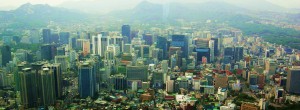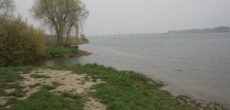
Seoul City Skyline
The population of South Korea is around 48 million as of 2010. This is an increase of 28 million since the first official census was held in 1949. The main reason for population increase was the economic and baby boom after the Korean War. The current rate of population growth in Korea is 0.3%. In the 1960’s the growth rate was 3%. With the current 0.3% and the previous 3% it means that Korea has an aging population and Korea is currently the worlds most rapidly ageing country. By 2050, the average age of the population of Korea is projected to be 57 years making it the most elderly nation in the world.
South Korea is one of the most densely populated countries in the world. The capital of Korea, Seoul has a population of over 10 million people. Seoul has the largest population density among OECD countries. Seoul has almost 3 times the population density of Tokyo, London and nearly 8 times that of New York City.
Korea is one of the most ethnically homogeneous nations in the world and was given the nickname of “Hermit Kingdom”.
During King Gojong’s reign of the Joseon Dynasty in the mid 1860’s, Korea had closed all border and trade (except China) to avoid Western Imperialism and ideology at a time when outside influence of any kind was not welcomed in Korea. King Gojong intended to maintain Korea as a Confucian nation with strong ties to China at all costs. Christianity was spread throughout the Joseon Dynasty mainly after the the first Catholic missionaries from France arrived in 1836 and this was seen as a threat. A rigorous persecution of Christians took place in which thousands of Christian monks, priests and followers were executed. Korea was forced to open it’s country to Japan in 1876 after a large Imperial Fleet arrived and over the next few decades began trading and signing treaties with many Western countries.
In 1961 there were 38,830 foreigners in Korea. Now Korea has a foreign population of over 1,000,000 accounting for 2% of the total population. Most of these are from China (Korean-Chinese), USA, Vietnam, the Philippines, Thailand and Japan. Korea has about 8,000,000 tourists visiting their country every year. The biggest group of tourists visiting Korea is the Japanese and Chinese followed by numerous other Asian countries and North America.





